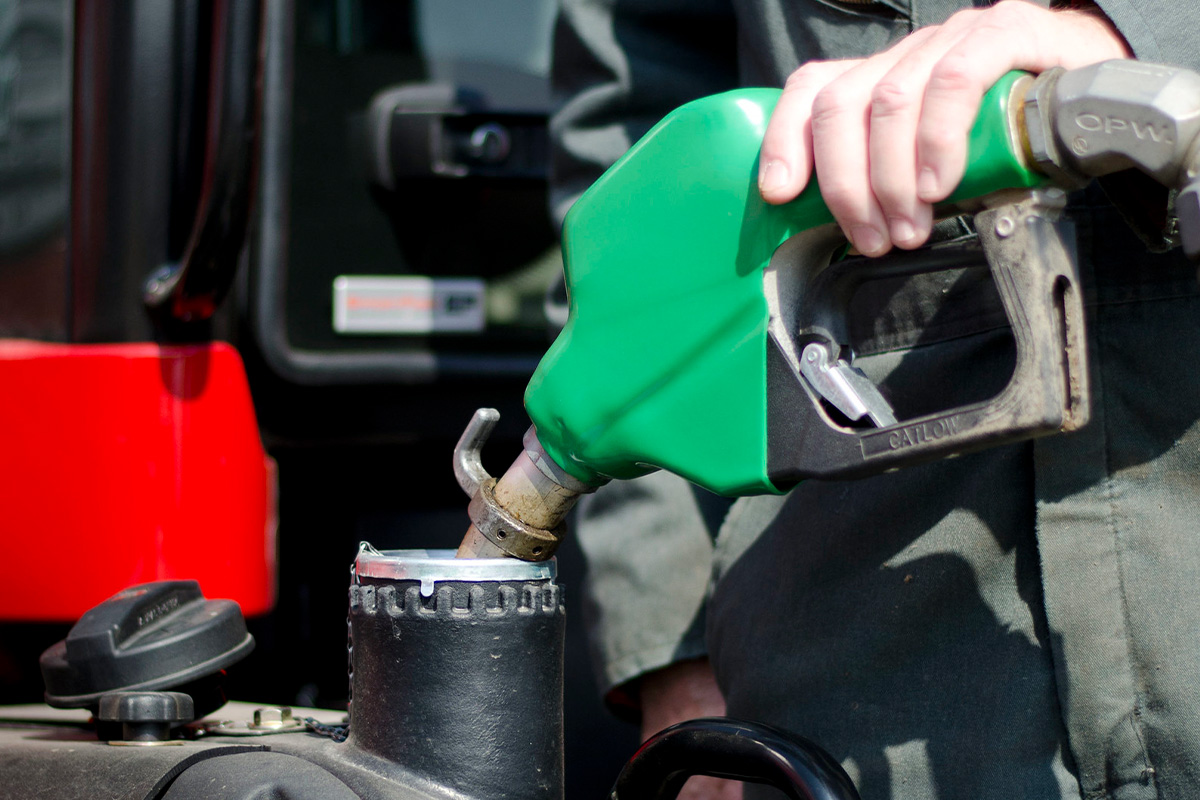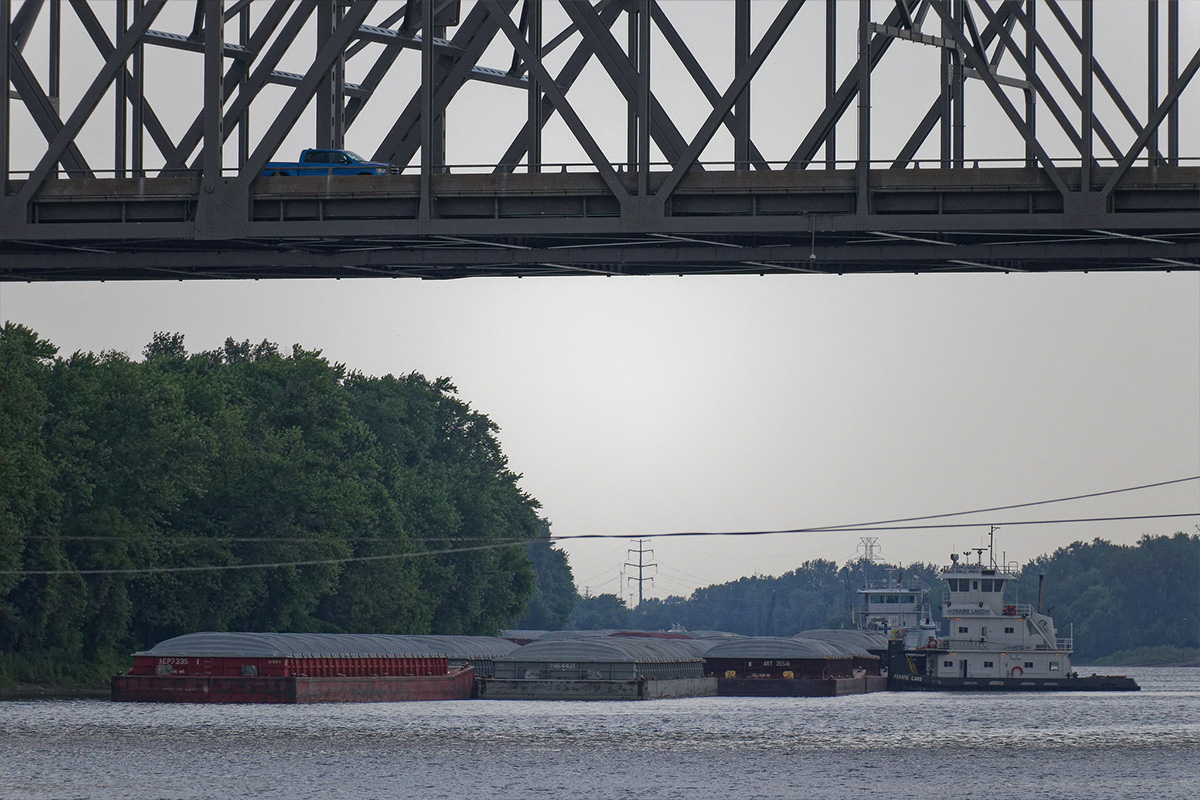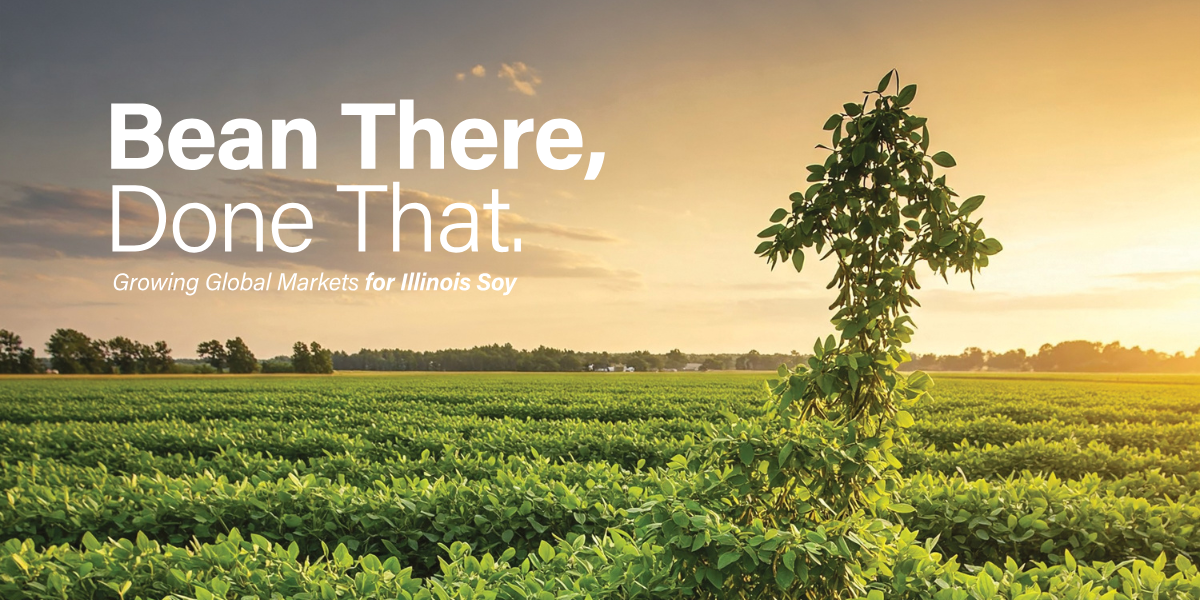Farmer-led ISA advances soy biodiesel, river transport and research
Putting points on the soybean scoreboard hasn’t always been as straightforward as scoring a touchdown. In fact, over the past 60 years of Illinois Soybean Association (ISA) advocacy, securing beneficial legislation has consistently required a strategic balance of offense and defense—underpinned by a single priority group of agricultural leaders.
“We have invested continuously in the state on research that influences policy that informs farmer decisions, and all of that research has been farmer-led, farmer-approved and farmer-guided,” explains Corey Lacey, Ph.D., ISA’s Environmental Policy Manager. “Either by our farmer board or by the stakeholders that are sharing input. That’s really important to understand.”
So in recognition of that farmer leadership—and in conjunction with ISA’s 60th anniversary this fall—this article provides a few gameday snapshots. The past several decades have presented numerous policy wins and a few challenges in the areas of biodiesel, soybean research and river transportation.
Here are just a few of those highlight-reel moments, as described by Lacey and David Kubik, Biofuels and Trade Policy Manager at ISA.
Biofuels Boost Economy Even As Blends Hit Resistance
When the Illinois soybean biofuels story captures the imagination of an urban Chicago legislator, you know you’re onto something. Kubik experienced that firsthand several years ago while hosting an event in partnership with the Chicago Park District. The district uses biodiesel “to its fullest” across its fleet and is a longtime member of the B20 Club—made up of municipalities, businesses and other organizations using biodiesel to power their transportation needs.
The timing of the event couldn’t have been more challenging. Chicago elections were underway, and seven other invited legislators stopped by to say they couldn’t visit. They were too busy knocking on doors to help their aldermen secure votes.
But that didn’t stop Rep. Eva-Dina Delgado (3rd District) of the Illinois House of Representatives.
“We got that 1:1 time where we were able to answer all of her questions,” Kubik recalls. Inspired, she wound up sponsoring biofuels legislation benefiting Illinois farmers. “Telling our story to one person, if it’s the right person, can have a huge impact.”
The origin story of soy-based biodiesel dates back well over 100 years. In those days, people used vegetable oil to power diesel engines, Kubik explains. Eventually, the crop checkoffs got together to make biodiesel from soybean oil compatible with today’s engines.
Public policy followed to promote this new fuel. The Renewable Fuel Standard (RFS) was implemented under the administration of President George W. Bush, and Illinois began to offer a biodiesel blender’s tax credit.
Soybean lore also holds that 20 years ago, creative Illinois legislators added a biodiesel sales tax incentive for the state into a capital bill to win the favor of downstate Democrats, whose farmer constituents would benefit.
“That really helped promote the biodiesel industry in Illinois because now we’re one of the first states to have stackable credits,” Kubik explains, “meaning that we’re utilizing both credits from the federal government and the state government to promote the industry.”
Now, those who sold biodiesel at the specified blend rate were exempt from paying state sales taxes, Kubik says. Today, Illinois enjoys the No. 3 biggest market for biodiesel at 250 million gallons consumed per year. It held the No. 1 spot for a while, eventually unseated by California and its low-carbon fuel standard, and also by Texas with its massive population of drivers.
The economic benefits extend to farmers and rural Illinois broadly. Biodiesel adds 10 percent to 15 percent value to each bushel of soybeans—roughly $1.15 to $1.72 per bushel, or $75 to $125 per acre, at the time of this writing, depending on markets, Kubik says. Meanwhile, the biodiesel industry employs 3,000 people.
Financials aren’t the only win for biodiesel. Life-cycle assessments (LCAs) have found that biodiesel reduces emissions between 70 percent and 80 percent compared to petroleum and conventional diesel. It also reduces particulate matter—which people can breathe into their lungs, especially working in railroad yards and heavy industry—by about 50 percent, Kubik says.
Partners on biodiesel policy have included the state’s biodiesel refiners and renewable energy groups with plants in Danville and Seneca; Incobrasa in Gilman; the Illinois Corn Growers; and the American Lung Association; plus members of the B20 Club, Kubik says.
There are still opportunities to expand biodiesel access— and prevent rollbacks. For example, local governments and nonprofits miss out on the sales tax incentive, so ISA is advocating for legislation to help compensate them for using biodiesel, putting them on par with the private sector. On the federal level, ISA seeks changes to the RFS as well as to Inflation Reduction Act provisions that could curb biodiesel use.
“The regulations are not friendly to production agriculture,” Kubik says. Meanwhile, some U.S. fleets are switching away from biodiesel and toward used cooking oil from China in an effort to reduce their carbon emissions intensity. Yet what some buyers don’t realize is that cooking oil can be counterfeit because it contains palm oil harvested via rainforest destruction in Indonesia.
Despite such challenges, Kubik is optimistic about the future of biodiesel in Illinois. “All of these industries that utilize heavy equipment, biodiesel is going to have a role in decarbonizing those for years to come,” he says.
Ramping Up River Access
For generations, Illinois soybean farmers have enjoyed the strategic advantage of proximity to major rivers—including the Mississippi and Illinois. Yet that edge is beginning to erode amid slow progress on upgrades to the state’s 100-year-old locks and dams. Meanwhile, international competitors such as Brazil have figured out ways to get cargo ships 900 miles up the Amazon River, reducing their export costs below those of the U.S. and making them more competitive for Chinese buyers.
“Without these investments, other countries are going to be able to leapfrog us,” Kubik says.
To keep Illinois soybean farmers fully in the game, ISA has long advocated for accelerated implementation of new and improved river infrastructure. Whereas the current lock-and-dam system can only accommodate a tugboat pushing six barges strung together, plans are in place to accommodate 15-barge tows. The Navigation and Ecosystem Program (NESP) embedded in the 2022 federal bipartisan infrastructure bill will fund those upgrades.
It’s anticipated to be a slow process. Seven lock-and-dams will be built and upgraded in the NESP system. They’ll be built one at a time, and the project will take several years to complete, Kubik says. ISA continues to advocate for expedited construction by the U.S. Army Corps of Engineers. And it’s also pushing for state-level improvements at river ports that could make rail access easier and increase the decision-making power of local port districts to help the farmers in their respective seven-county area.
Go-to partners on locks and dams have been the Waterways Council Inc. (WCI), Illinois Corn Growers and other Midwest agriculture groups. “For future issues for locks and dams, the answer is going to be ensuring the locks and dams are built and ensuring they’re built as fast but as safe and as eff icient as possible,” Kubik says.

Biodiesel manufactured with Illinois soybeans will play a key role in decarbonizing the economy for years to come, predicts David Kubik, ISA biofuels and trade policy manager. Soybean farmers have played a key role advocating for federal and state policies that encourage more fl eet operators to shift to biodiesel, enjoying tax credits, greenhouse gas emissions reductions and cleaner air. Credit: David Kubik

Seven new lock-and-dam systems will be built in Illinois in the years ahead using federal infrastructure funding. The upgrades will replace 100-year-old infrastructure and accommodate 15-barge tows, doubling capacity from the current six-barge tows. ISA is advocating for expedited construction by the U.S. Army Corps of Engineers, in part because soybean competitors such as Brazil have successfully upgraded infrastructure, enabling farmers to export beans to China at a cheaper rate than U.S. farmers can secure.
Research Provides Policymakers With Farm Insights
From the riverfront to the field edge, ISA-led research has provided decision-makers the insights they need on farmers’ water management and beyond, says Lacey.
“Historically, a lot of our research has focused on nutrient reduction loss strategy, investigating ways to help farmers improve their nutrient management in-field and to better understand nutrient loss from those fields,” he says.
Not only does research illuminate new stewardship opportunities, it also highlights practices Illinois farmers already use. Lacey elaborates: “What are farmers already doing in Illinois to mitigate and avoid some of these environmental concerns? The adoption of conservation practices, the steps farmers are taking to adopt no-till and residue management and cover crops where it makes sense.”
Meanwhile, additional ISA research has helped Illinois farmers better understand how to minimize use of herbicides and pesticides more efficiently to grow crops productively without unintended environmental consequences such as drift or runoff, Lacey says.
In other cases, ISA serves as an independent and unbiased source of information on emerging opportunities such as ecosystem services markets. “For example, we don’t promote any one carbon market program, but we do want farmers to understand the options that are out there,” Lacey explains. “One big highlight is our sponsorship of groups like the Illinois Sustainable Ag Partnership, which helps farmers understand carbon sequestration and engage in carbon market spaces.”
Additionally, Illinois farmers have engaged EPA on the Endangered Species Act and its potential negative impacts on farmer livelihoods. Those conversations has reaped benefits. “We have actually received input from the EPA about how to better sponsor and drive research that will, in the future, influence their decision-making,” Lacey says.
Continued financial investment in, and partnership with, Illinois universities has led to deeper insights on stream bank erosion and new discoveries that agriculture might contribute less legacy phosphorus in waterways than once believed, he says.
Looking ahead to ISA’s next 60 years, Illinois farmers will continue leading the charge— in biodiesel, river transportation and research—from the field, not the sidelines.
“Our funded research is approved by our farmer board,” Lacey explains. “They provide leadership from the very start of deciding, ‘Is this research relevant to Illinois farmers?’ The people making the decision are Illinois farmers.”
Recent Articles
This exclusive issue of Illinois Field & Bean Magazine covers checkoff-funded research projects and their findings, as told by the research leads themselves.
By
Meet Bean There, ISA's International Market Development blog that covers events, conferences, trade missions and farm visits to connect Illinois soy with industry representatives, key trade partners, global buyers and more.
By Emma Peters, ISA International Markets Coordinator

